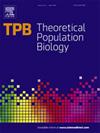连通性、保护和捕捞:了解收获区和保护区之间扩散的影响。
IF 1.3
4区 生物学
Q4 ECOLOGY
引用次数: 0
摘要
过度采伐是一个紧迫的全球问题,而空间管理,如保护指定区域,是一个被提议的解决方案。本研究探讨了保护区和采伐区之间的连通性(以分散率为依据)如何影响渐近种群总数和渐近产量,这是保护管理和保护区设计的关键问题。我们使用了一个双斑块模型,该模型在离散和连续时间内具有异质性栖息地质量,对称扩散和密度依赖的生长函数。一块土地按比例收割,而另一块则受到保护。我们的结果表明,增加的分散并不总是增加渐近总种群大小或渐近产量。根据环境的不同,分散可以使受保护的斑块免于过度开发,从而潜在地增加种群总数和产量。然而,如果收获压力很大,高水平的分散也会导致种群总数减少,甚至导致两个斑块的灭绝。保护斑块中的种群需要具有较高的繁殖潜力,保护斑块需要是有效的较大的斑块,才能单调地从增加的分散中获益。这些发现提供了在收获压力下分散如何影响破碎景观动态的基本理解。本文章由计算机程序翻译,如有差异,请以英文原文为准。
Connectivity, conservation and catch: Understanding the effects of dispersal between harvested and protected patches
Overharvesting is a pressing global problem, and spatial management, such as protecting designated areas, is one proposed solution. This study examines how connectivity (in terms of dispersal rate) between protected and harvested areas affects the asymptotic total population size and the asymptotic yield, which are key questions for conservation management and the design of protected areas. We utilise a two-patch model with heterogeneous habitat qualities, symmetric dispersal and density-dependent growth functions in both discrete and continuous time. One patch is subject to proportional harvesting, while the other one is protected.
Our results show that increased dispersal does not always increase the asymptotic total population size or the asymptotic yield. Depending on the circumstances, dispersal enables the protected patch to rescue the harvested patch from overexploitation, potentially increasing both total population size and yield. However, high levels of dispersal can also lead to a lower total population size or even cause extinction of both patches if harvesting pressure is strong. The population in the protected patch needs to have high reproductive potential and the protected patch needs to be the effectively larger patch in order to benefit monotonically from increased dispersal. These findings provide a fundamental understanding of how dispersal influences dynamics in fragmented landscapes under harvesting pressure.
求助全文
通过发布文献求助,成功后即可免费获取论文全文。
去求助
来源期刊

Theoretical Population Biology
生物-进化生物学
CiteScore
2.50
自引率
14.30%
发文量
43
审稿时长
6-12 weeks
期刊介绍:
An interdisciplinary journal, Theoretical Population Biology presents articles on theoretical aspects of the biology of populations, particularly in the areas of demography, ecology, epidemiology, evolution, and genetics. Emphasis is on the development of mathematical theory and models that enhance the understanding of biological phenomena.
Articles highlight the motivation and significance of the work for advancing progress in biology, relying on a substantial mathematical effort to obtain biological insight. The journal also presents empirical results and computational and statistical methods directly impinging on theoretical problems in population biology.
 求助内容:
求助内容: 应助结果提醒方式:
应助结果提醒方式:


